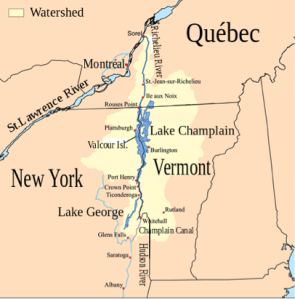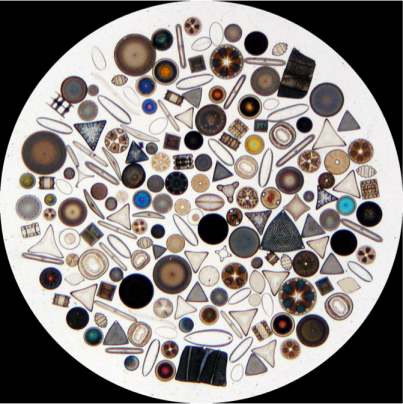By Erin Hayes-Pontius
Paleoecology, or the study of organisms and their environments in past times, has a specific branch known as paleolimnology, which deals with records left by lakes. Beyond being pleasant places for swimming, fishing, and other recreation, lakes are particularly valuable for paleo records. Not only do lakes archive the goings-on within themselves, but they also archive goings-on within their drainage basins. In the case of Lake Champlain, it has a drainage basin nearly 17 times that of its surface area (21,326 km2 : 1,269 km2), making it extra sensitive to changes in climate (Fig. 1).
Due to lakes’ positions at low points on the landscape, they integrate everything that happens within their drainage basin and are therefore important “sentinels of change” (Williamson et al. 2009).
Over time, a variety of things fall into lakes, such as diatoms (single-celled algae), pollen, chironomid midges, or needles, to name a few, and these things get buried by sediment. In some lakes- some, certainly not most- sediment deposits occur quickly enough to leave annual layers; if this interests you, definitely check out Rob’s post from a little while back. Unfortunately, this does not happen most of the time, and we’re left with a much coarser resolution to deal with. Rather than knowing about the diatom species every year, we may only know ‘who’ was there every few years, every decade, or even every few decades. Despite these challenges, lakes are still- and will continue to be- widely used in paleoecology. Continue reading

